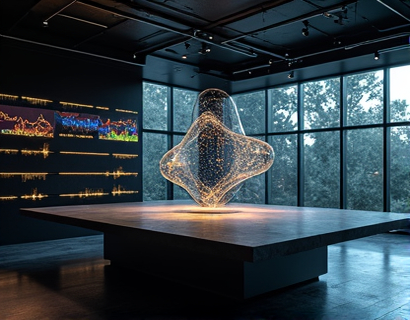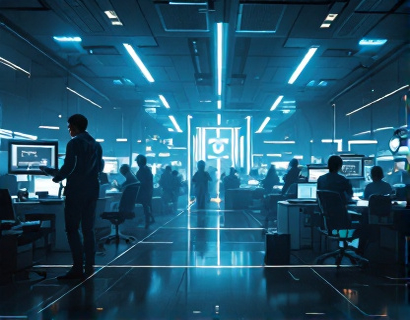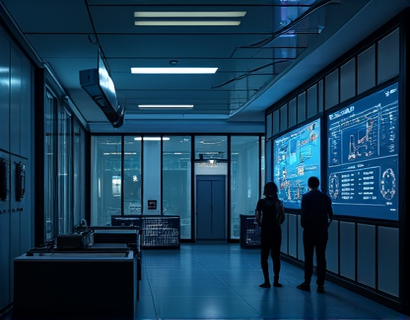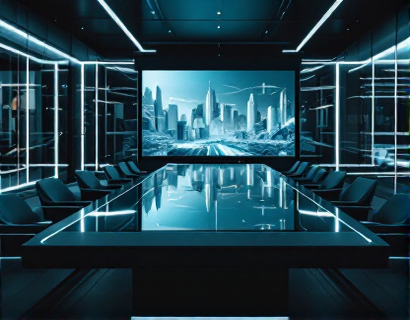UX Design Trends 2025: Mastering Digital Transformation with Expert Strategies and Insights
In the rapidly evolving landscape of digital products and services, UX design plays a pivotal role in ensuring user satisfaction and driving business success. As we step into 2025, the field of UX design continues to evolve, influenced by technological advancements, changing user behaviors, and emerging design trends. This comprehensive guide aims to equip UX designers and enthusiasts with the latest expert strategies, practical tips, and insights to master digital transformation and enhance user experience.
Understanding the Current UX Design Landscape
The UX design landscape in 2025 is characterized by a focus on inclusivity, sustainability, and advanced technologies. Inclusivity in design ensures that products are accessible and usable by a diverse range of users, including those with disabilities. This trend is driven by legal requirements and a growing awareness of the importance of equitable design. Designers are incorporating features such as voice commands, adjustable text sizes, and high-contrast modes to cater to a broader audience.
Sustainability is another key trend, as users and businesses increasingly prioritize environmentally friendly practices. UX designers are tasked with creating digital experiences that minimize environmental impact, such as optimizing load times to reduce energy consumption and designing for longevity to decrease the need for frequent updates and replacements. This shift not only benefits the planet but also enhances brand reputation and user loyalty.
Emerging Technologies Shaping UX Design
Advancements in technology are continuously reshaping the UX design landscape. Artificial Intelligence (AI) and Machine Learning (ML) are at the forefront, offering powerful tools to personalize user experiences and automate complex tasks. AI-driven chatbots and virtual assistants provide instant support and guidance, enhancing user engagement and satisfaction. These technologies analyze user behavior and preferences to deliver tailored content and recommendations, creating a more intuitive and seamless experience.
Augmented Reality (AR) and Virtual Reality (VR) are also gaining traction, offering immersive experiences that blur the lines between the physical and digital worlds. AR can be used to enhance product visualization, allowing users to see how products would look in their environment before making a purchase. VR, on the other hand, creates fully immersive environments for training, entertainment, and education, providing users with unique and memorable experiences.
Design Systems and Consistency
As digital products become more complex, maintaining consistency across platforms and devices is crucial. Design systems play a vital role in achieving this by providing a centralized repository of design assets, components, and guidelines. These systems ensure that designers and developers can create cohesive and scalable experiences, reducing redundancy and improving efficiency. By leveraging design systems, teams can focus on innovation rather than reinventing the wheel for each new project.
Consistency extends beyond visual elements to include interactions and behaviors. Uniformity in navigation, feedback, and error handling helps users build trust and confidence in the product. A well-defined design system also facilitates onboarding, as new users can quickly understand how to interact with the product based on familiar patterns and conventions.
Microinteractions and Feedback
Microinteractions are small, focused interactions that provide immediate feedback to users, enhancing the overall user experience. These subtle animations and effects can make a significant difference in how users perceive and engage with a product. For example, a loading spinner that transitions smoothly from one state to another not only indicates progress but also reduces user frustration and anxiety.
Feedback is essential for guiding users through tasks and confirming their actions. Clear and timely feedback helps users understand the results of their interactions, whether successful or not. This can be achieved through visual cues such as color changes, icons, and text messages. By incorporating thoughtful microinteractions and feedback mechanisms, designers can create more intuitive and satisfying experiences.
Voice User Interface (VUI) Design
The rise of smart speakers, virtual assistants, and voice-enabled devices has made VUI design a critical area of focus. Designing for voice requires a different approach compared to traditional interfaces, as users interact with these systems using natural language. Key considerations include conversational flow, intent recognition, and error handling.
To create effective VUI designs, designers must prioritize clarity and simplicity. Conversations should be natural and effortless, mimicking human-to-human interactions. This involves understanding user intent, providing relevant responses, and allowing for easy correction of mistakes. By focusing on these aspects, designers can ensure that voice interactions are seamless and enjoyable.
Personalization and User Control
Personalization has become a cornerstone of modern UX design, as users expect experiences tailored to their preferences and behaviors. Leveraging data and analytics, designers can create personalized content, recommendations, and interfaces that resonate with individual users. However, it's essential to strike a balance between personalization and user control, ensuring that users feel in charge of their experience.
Providing options for users to customize their settings, manage data privacy, and opt-out of certain features is crucial. Transparency about how data is used and the benefits of personalization can help build trust and satisfaction. By offering a personalized yet controllable experience, designers can enhance user engagement and loyalty.
Accessibility and Inclusive Design
Accessibility is not just a compliance issue but a fundamental aspect of UX design. Inclusive design practices ensure that products are usable by everyone, regardless of their abilities or disabilities. This involves adhering to accessibility standards such as WCAG (Web Content Accessibility Guidelines) and conducting user testing with diverse participants.
Designers can implement accessibility features such as keyboard navigation, screen reader support, and alternative text for images. Additionally, considering cognitive accessibility by using clear language, consistent layouts, and predictable interactions can make a significant difference. By prioritizing accessibility, designers can create products that are truly inclusive and user-friendly.
Future-Proofing UX Design
As technology continues to advance, UX designers must adopt a forward-thinking approach to future-proof their designs. This involves staying informed about emerging trends, technologies, and user behaviors, and anticipating how they will impact the design landscape. Embracing a mindset of continuous learning and experimentation is essential for staying relevant and innovative.
One way to future-proof UX design is by focusing on flexibility and adaptability. Designing for multiple devices and screen sizes, ensuring compatibility with new technologies, and creating scalable solutions can help products remain viable in the long term. Additionally, considering the ethical implications of design choices and striving for sustainability can position brands as leaders in the industry.
Practical Tips for Implementing Trends
While staying abreast of the latest trends is important, it's equally crucial to implement them effectively. Here are some practical tips to help designers integrate these trends into their work:
- Conduct user research to understand the needs and preferences of your target audience. This will guide your design decisions and ensure that trends are applied in a meaningful way.
- Experiment with prototypes and iterate based on user feedback. This iterative process helps refine designs and ensures that new trends enhance rather than complicate the user experience.
- Leverage design tools and frameworks that support consistency and efficiency. Design systems and component libraries can streamline the design process and maintain uniformity across projects.
- Stay informed through industry blogs, conferences, and communities. Engaging with other designers and experts can provide valuable insights and inspiration for applying trends effectively.
- Prioritize usability and accessibility in all design decisions. Even the most innovative features should not compromise the user's ability to use the product effectively.
By combining a deep understanding of current trends with practical implementation strategies, designers can create digital products that not only look modern but also deliver exceptional user experiences.
Conclusion
As we navigate the exciting and challenging landscape of UX design in 2025, embracing the latest trends and expert strategies is essential for driving digital transformation and enhancing user satisfaction. By focusing on inclusivity, sustainability, advanced technologies, and user-centered practices, designers can create products that stand out and make a lasting impact. Remember, the key to success lies in continuous learning, experimentation, and a commitment to delivering exceptional user experiences.











































